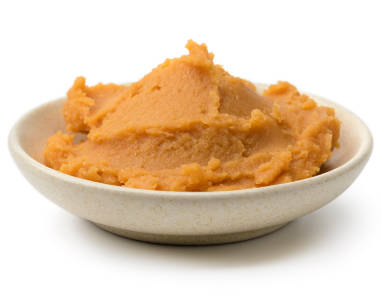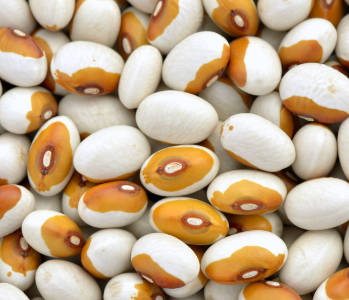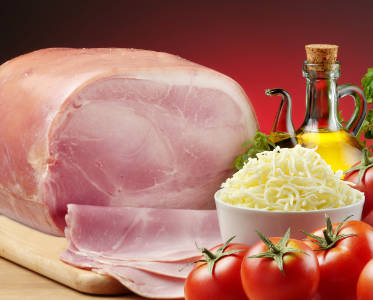All Ingredients
winter savory
This perennial herb has a stronger flavor than its annual relative, summer savory.
Learn morewinter squash
Winter squash come in many sizes and shapes, but all have hard outer rinds that surround sweet, often orange flesh. Winter squash arrive late in the growing season and they have a long shelf life, so they've long been a staple in winter and spring, when other vegetables are harder to come by. Unlike summer squash, winter squash must be cooked. They're usually baked or steamed, and then sometimes puréed. Select squash that are heavy for their size.
Learn morewonton noodles
These are thin Chinese egg noodles of various widths. They're usually served in soups. They're available both fresh and dried in Asian markets.
Learn morewonton wrappers
Wontons are the Chinese answer to ravioli--small packets of meat encased in a thin noodle wrapper. The wrappers are made of flour, eggs, and water, and, once filled with meat, can be easily folded and pinched into shape. While assembling the wontons, keep the stack of wrappers moist by covering them with a damp towel. You can seal the dumplings with a "glue" made with cornstarch and water. The wrappers come in different thicknesses. The thin ones work best in soups, while the thicker ones are best for frying. Look for stacks of them wrapped in plastic in the refrigerator cases of Asian markets. Store them in the refrigerator or freezer, but let them come to room temperature before using.
Learn morewood ear mushroom
Chinese markets carry fresh or dried pieces of this tree mushroom. You're supposed to soak or simmer the dried chips until they soften, and then rinse them carefully to remove any dirt. They're not very flavorful, but they have an interesting texture and are believed to have medicinal benefits.
Learn moreWorcestershire sauce
Health foods sell a vegetarian version of this. To make your own: See the recipe for Worcestershire Sauce posted on RecipeSource.com.
Learn moreX.O. sauce
Asians pour this sauce over noodles and seafood. It's made from dried anchovies, shrimp, and chiles.
Learn morexanthan
Derived from corn sugar, xanthan gum is used as a thickener, stabilizer, and emulsifier.
Learn moreyam
Americans use the word "yam" to refer to a sweet, moist, orange-fleshed variety of sweet potato. To everyone else in the world, a yam is what Americans call a tropical yam, a firm tuber with white flesh. Varieties of American "yams" (sweet potatoes) include the garnet yam (pictured at left) and the jewel yam.
Learn moreyam cake
Yam cakes are made by combining yams, dried prawns and rice flower. Then shaping it and steaming it.
Learn moreyam leaves
Yam leaves are the young leaves of the yam (sweet potato) plant. They are used as flavorful greens in various dishes worldwide.
Learn moreyamaimo
This is a sticky yam that the Japanese peel and grate or julienne for salads. It's also fried or used to make soba noodles.
Learn moreyard-long bean
These beans usually aren't a yard long--half a yard is more typical. Asians like to cut them into smaller pieces and add them to their stir-fried dishes. You can also boil or steam them like green beans, though they're not as sweet and juicy. They don't store well, so use them within a few days of purchase.
Learn moreyeast
Yeast is a one-celled fungus that converts sugar and starch into carbon dioxide bubbles and alcohol. This has made it a useful ally in the production of bread, beer, and wine. There are many varieties of yeast. Bread is made with baker's yeast, which creates lots of bubbles that become trapped in the dough, making the bread rise so it's light and airy when baked. A small amount of alcohol is also produced, but this burns off as the bread bakes. Beer yeast and wine yeast are used to convert sugar into alcohol and, in the case of beer and champagne, bubbles. You should never eat raw active yeast, since it will continue to grow in your intestine and rob your body of valuable nutrients. But once deactivated through pasteurization, yeast is a good source of nutrients. Brewer's yeast and nutritional yeast, for example, are sold as nutritional supplements, and Australians are fond of yeast extracts--like Vegemite, Marmite, and Promite--which they spread like peanut butter on bread.
Learn moreyeast extract
This is a nutritious, pungent, and salty paste that's popular in Australia, New Zealand, and Great Britain. It's often spread with butter on bread, or mixed with hot water to make a drink Popular brands include Vegemite®, Marmite®, which is sweeter and perhaps a bit more palatable to Americans, and Promite®, which is sweeter yet but hard to find.
Learn moreyeast starter
A starter is a mixture of flour, water, and other ingredients that's been colonized by wild airborne yeast and friendly bacteria. These one-celled immigrants lend the starter--and the breads made with it--a special character. Sourdough starter, for example, contains a strain of yeast that's tolerant of the lactic and acetic acids produced by the lactobacilli. Those acids give sourdough bread its characteristic tang. The French use a soupy starter called a poolish to make their breads, while the Italians use a thicker one called a biga. Up until the late 19th century, all yeast breads were leavened with starters, and keeping a starter alive in its crock was a routine household chore. To keep your own starter alive, wait until it's established, then store it in an airtight container in the refrigerator. To keep it healthy, bring it to room temperature once a week and remove all but about 25% of it (either make bread with it or discard it). Replace what you've taken with a mixture of equal parts warm water and flour, stir, then return it to the refrigerator. Properly maintained, a starter can last for decades, developing an ever more distinctive character as it ages. To use a starter to make bread, remove some of it (usually about 2 cups), and use it in place of other forms of yeast. Replace the amount you took with a mixture of equal parts flour and warm water. Discard your starter if it becomes orange or pink, or if it develops an unpleasant odor. It's easy to make starters from scratch, but even easier to borrow some from a friend. Since sourdough starters must be colonized by strains of yeast and lactobacilli that are particular to certain regions (like San Francisco), a homemade starter might not yield sour bread. Your best bet is to get a powdered sourdough starter mix from your supermarket or a mail order supplier.
Learn moreyellow Chinese chives
These are Chinese chives that have been shielded from the sun in order to stifle the production of chlorophyll. Use them just like ordinary Chinese chives.
Learn moreyellow Finn potato
These are great all-purpose potatoes, known for their yellow flesh, creamy texture, and buttery flavor.
Learn moreyellow foot mushroom
Though not as flavorful as golden chanterelles, these mushrooms work well in most chanterelle recipes.
Learn moreyellow melon
These melons are small, about the size of medium papaya. They taste like cantaloupe, but with firmer flesh.
Learn moreyellow miso
This golden yellow miso is made of rice and aged briefly. It's salty but mild and quite versatile. It's a good choice if you only want to store one tub of miso in your refrigerator.
Learn moreyellow mustard seeds
Whole mustard seeds are most commonly used to make pickles or relish. Most cooks prefer their mustard either ground, called ground mustard = dry mustard = mustard powder, or ready-made as a condiment, called prepared mustard.
Learn moreyellow onion
This is what most cooks reach for when a recipe simply calls for "onion." It's higher in sulfur than the white onion, so it has a more complex flavor. The sulfur, unfortunately, is also what makes you cry when you cut into it. Yellow onions turn a rich brown and become sweeter and milder when cooked. Many people find them too pungent to eat raw.
Learn moreyellow pea
These have an earthier flavor than green peas. Scandinavians like to use them in soups, while the British use them in their pease pudding. It's best to buy them split, since split peas don't need to be soaked and cook fairly quickly.
Learn moreyellow squash
This category includes yellow straight-neck squash and yellow crookneck squash. They're interchangeable with zucchini.
Learn moreyellow wax pepper
These are easily confused with milder banana peppers. Sample before using. They are moderately hot.
Learn moreyellow-eyed pea
These are similar to black-eyed peas, only the "eyes" are yellow. They're popular in the South.
Learn moreyerba buena
The Spanish name "yerba buena" ("good herb") is used to describe several varieties of mint, including Satureja douglasii, Satureja chamissonis, and Mentha spicata (spearmint).
Learn moreyogurt
This is milk that's cultured with bacteria to make it thick and tangy. Ready-made yogurts are made from whole milk (with up to 4% butterfat), lowfat milk (with up to 2% butterfat), and skim milk (with up to .5% butterfat). Health buffs prefer brands that contain active cultures, which help keep their intestines populated with friendly bacteria. Many brands are heat-treated to destroy these cultures and increase shelf life. Yogurt often comes with added flavorings and thickeners. Flavored yogurts are made with artificial sweeteners to reduce calories. Lactaid makes a lactose-reduced yogurt, but many people with lactose intolerance can tolerate ordinary yogurt, especially brands that contains active yogurt cultures. Larger markets also carry yogurt made from soy milk and goat's milk, but these don't work well in delicate desserts. Organic yogurts also are available.
Learn moreyogurt strainer
This fine-meshed strainer is used to drain off the whey from yogurt in order to make yogurt cheese
Learn moreYork ham
This is a lightly smoked, dry-cured British ham. It's saltier but milder in flavor than other European dry-cured hams.
Learn moreyuba
This is the sweet, protein-rich skin that forms on warm soymilk as it cools. Japanese and Chinese cooks like to add it to soups or use it as wrappers, and when it's deep-fat fried, it makes a fairly realistic "skin" for a mock holiday turkey. You can buy very thin fresh sheets of it (called nama yuba) in Kyoto, Japan, and thicker round sheets that look like fruit leather in some Chinese markets. Elsewhere, you'll have to get it dried or frozen. Dried yuba comes as sheets, rolls, knots, and many other forms. It needs to be reconstituted with water before you can use it, unless you're planning to add it to a soup.
Learn moreyufka
This is the Middle Eastern and North African version of phyllo dough, with leaves that are slightly thicker and sometimes round. It's used to make savory pastries.
Learn moreYukon Gold potato
These are good all-purpose potatoes that have yellow flesh and a rich flavor. They're great for boiling, but they tend to fall apart if over-cooked.
Learn more












































































































































































































































































































































































